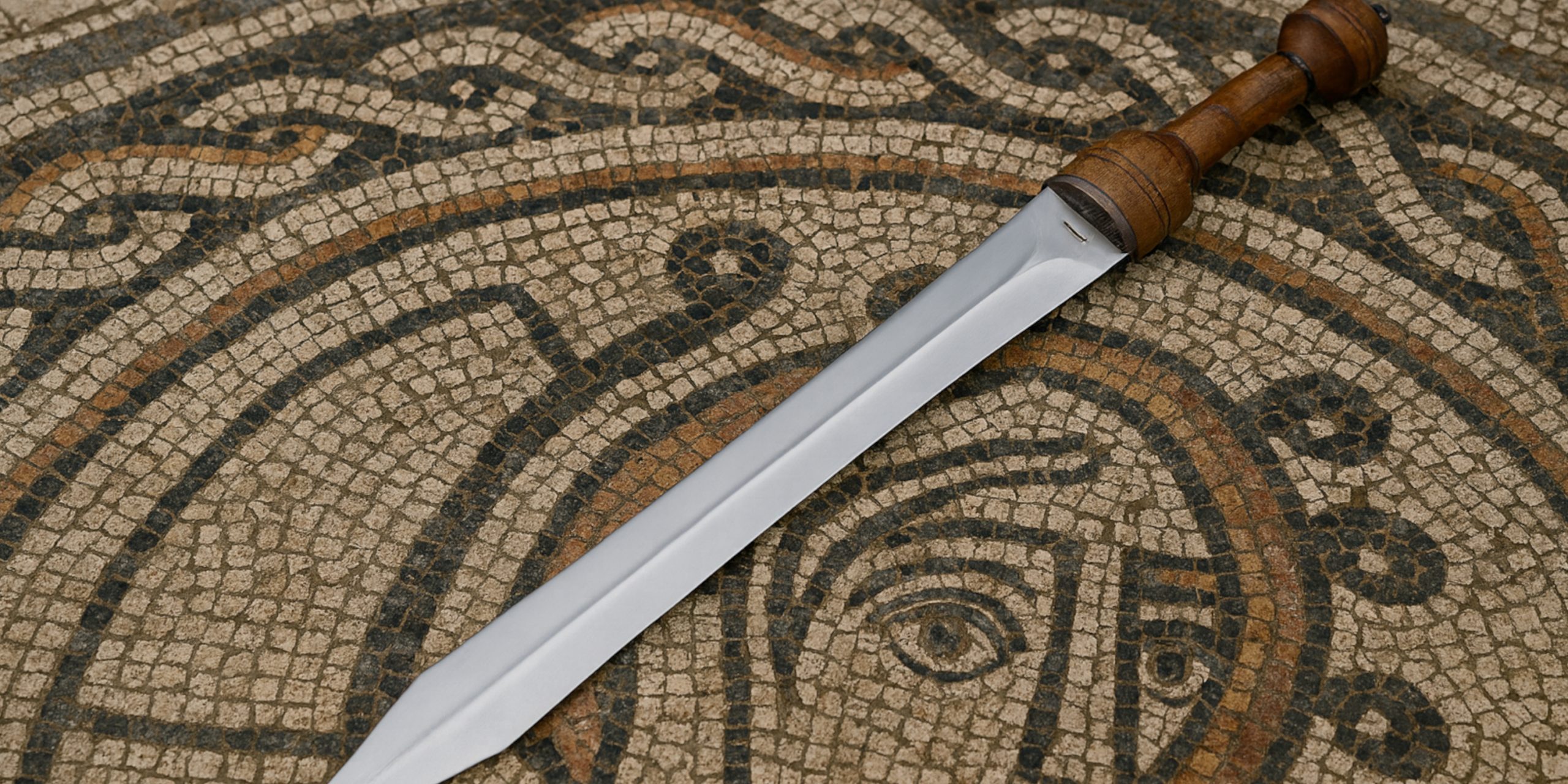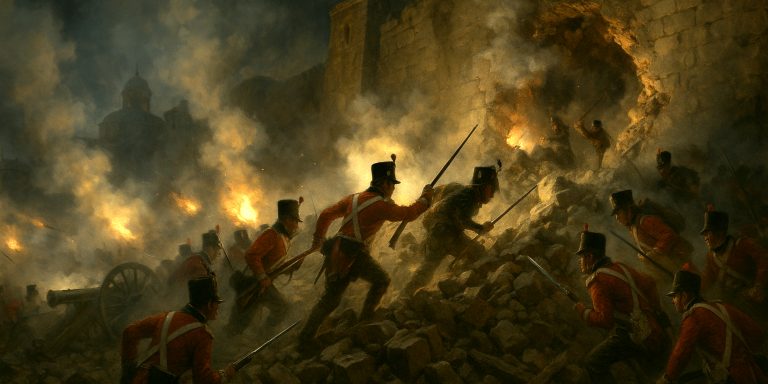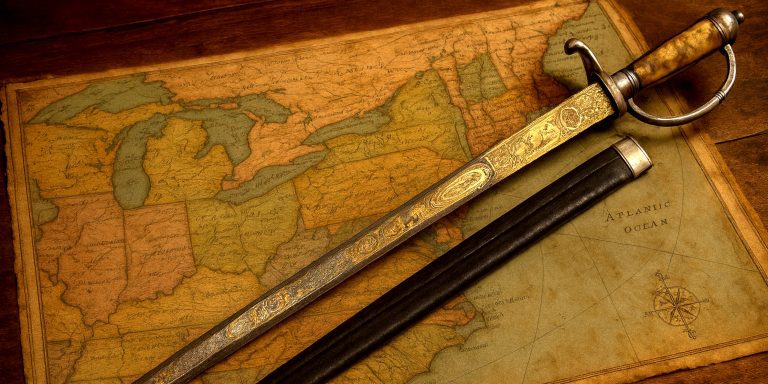
The Mainz type gladius is one of the most iconic weapons of the Roman Republic and early Empire. Recognised for its distinctive blade shape and robust construction, this sword played a central role in Roman military dominance from the late 2nd century BC through the 1st century AD.
The Mainz gladius represents a transitional design between the earlier, longer Spanish-style gladii and the shorter Pompeii variant that followed. Originating in the Roman provinces of Hispania and later refined in Germanic regions near Mainz, this sword became widely associated with legionaries during Rome’s imperial expansion under Augustus and Tiberius.
Specification
| Feature | Detail |
|---|---|
| Blade Length | Approximately 50–55 cm |
| Overall Length | Around 65–70 cm |
| Blade Width | Up to 7 cm at the widest point |
| Blade Shape | Leaf-shaped with a pronounced waist |
| Tip Type | Long, tapered point for thrusting |
| Edge Type | Double-edged, suitable for cutting and thrusting |
| Tang Construction | Full tang, often peened or riveted |
| Hilt Material | Bone, wood, or ivory grip with a domed pommel |
| Guard Type | Rounded or oval, sometimes decorated |
| Weight | 700–1000 grams |
History and Evolution
The Mainz type evolved from earlier Iberian designs encountered during Rome’s campaigns in Hispania. The blade’s widening near the centre and its sharply tapered point reflect both cutting and thrusting functions, unlike later variants that favoured thrusting alone.
By the time of Augustus (27 BC to AD 14), the Mainz gladius had become the standard issue for legionaries. Its production became centralised, particularly in the frontier regions like Germania, where the town of Mogontiacum (modern Mainz) gave the sword its name.
It was eventually supplanted by the Pompeii type by the mid-1st century AD, likely due to changes in fighting tactics and formation density.
Advantages and Disadvantages
Advantages:
- Versatility: Effective for both slashing and thrusting.
- Intimidation: The broad blade and pointed tip made it lethal at close quarters.
- Stability: Full tang construction ensured durability in prolonged use.
Disadvantages:
- Weight Distribution: Slightly heavier and more forward-weighted than later types.
- Manufacturing Complexity: The curved waist and leaf shape made it harder to mass-produce compared to the straight-edged Pompeii variant.
- Obsolescence: As tactics changed, so did the demand for shorter, faster blades better suited to tight formations.
Comparison with Similar Weapons
| Feature | Mainz Type | Pompeii Type | Fulham Type |
|---|---|---|---|
| Blade Shape | Leaf-shaped | Parallel-edged | Narrow with long taper |
| Point Design | Long, tapered | Shorter, symmetrical | Elongated spear-like |
| Usage Focus | Cut and thrust | Primarily thrust | Thrust-focused |
| Time Period | Late Republic to early Empire | Mid 1st to 3rd century AD | Circa 1st century AD |
| Mass Production | Less standardised | More standardised | Limited distribution |
Legacy
The Mainz gladius came to symbolise the might of the Roman legion during its most aggressive phase of expansion. It features prominently in reliefs, sculpture, and statuary, including on Trajan’s Column. Its reputation was such that “gladius” became a general term for sword in many later Romance languages.
The design influenced later sword forms in both the Romanised West and among neighbouring Germanic and Celtic peoples. Even as the Pompeii type became dominant, the Mainz sword retained a ceremonial and status-bearing role.
Where to See
- British Museum (London): Examples of Mainz-type gladii, with associated scabbards and fittings.
- Römisch-Germanisches Zentralmuseum (Mainz): A leading collection of Roman military equipment, including local finds.
- Museum of Roman Civilization (Rome): Reconstructions and artefacts from across the Empire.
- Xanten Archaeological Park (Germany): Replica gear and original weapon fragments.
Collector’s Guide
Owning an authentic Mainz-type gladius is exceptionally rare due to its age, but high-quality replicas and occasional museum-quality originals do appear at auction.
Key factors affecting value:
- Provenance and documentation
- Completeness (blade, hilt, scabbard)
- Degree of preservation
- Historical context (battlefield or tomb find)
Typical Auction Prices (Authentic Examples):
| Condition | Estimated Price Range (GBP) |
|---|---|
| Fragmentary blade only | £2,000 – £5,000 |
| Blade with partial hilt | £5,000 – £12,000 |
| Complete weapon with scabbard | £15,000 – £50,000+ |
| Museum-grade or elite provenance | £75,000+ |
Replicas:
High-end forged replicas range between £300 and £1,000, depending on craftsmanship and materials.
The Mainz gladius stands as a reminder of Rome’s early imperial military innovation. It bridged the practical with the symbolic, functioning both as a tool of conquest and an emblem of Roman identity.



